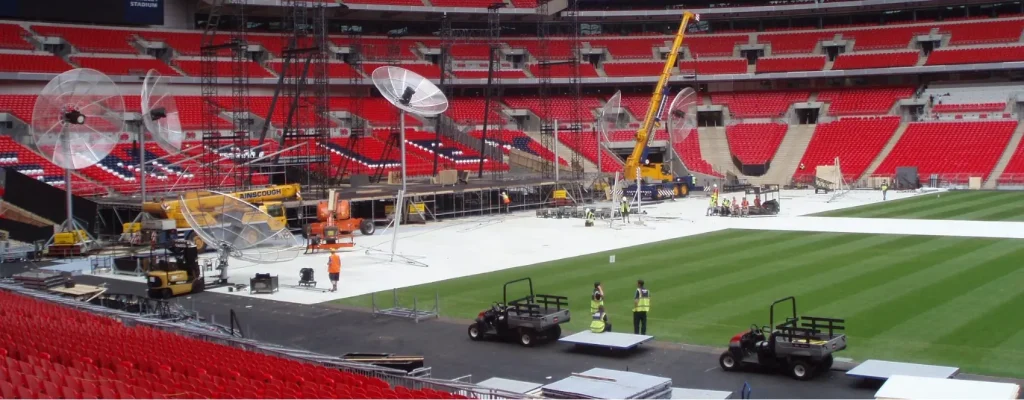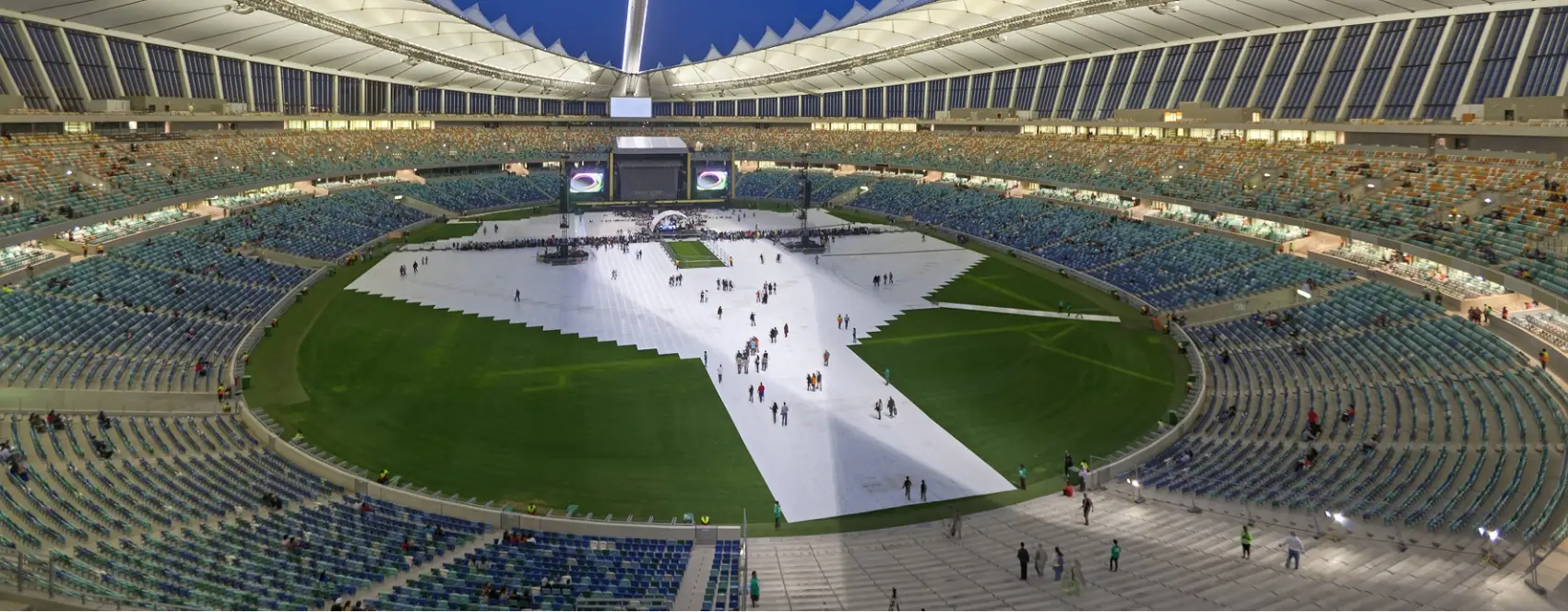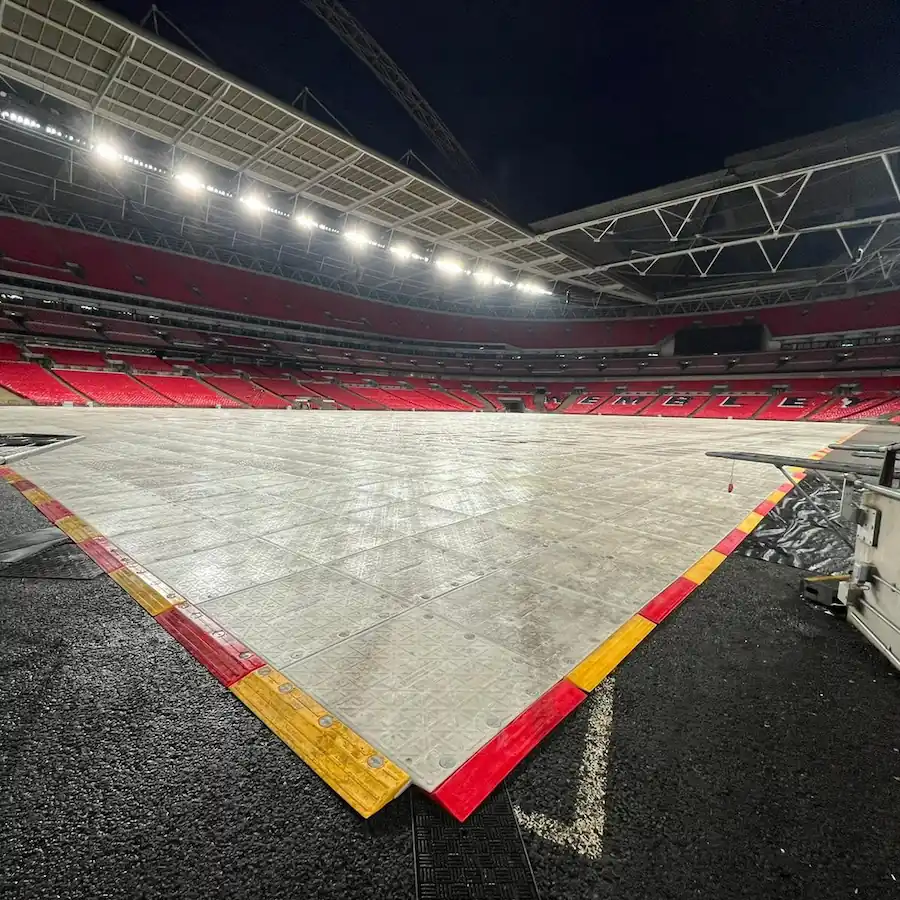How do stadiums change surfaces?
16/07/25
Modern stadiums typically do more than just host sporting events, needing to switch quickly between events, often in just a few hours, to prepare for concerts, matches and exhibitions with minimal disruption, meaning they need to change surfaces to make this possible. Terraplas flooring systems help them do exactly that. In this article, we’ll look at:
The process of changing stadium surfaces
Changing a stadium surface is no small task, and choosing the right solution is key to protect what’s underneath. Terraplas works closely with venue operators to assess their event needs, surface type and access so that, whether it’s a concert build or a basketball stadium conversion, they choose a solution that’s right for them.
Our temporary flooring for events includes both pedestrian and drivable systems, which can be installed quickly, sometimes covering over 1,000 square metres per hour using forklifts and manual crews, and ensuring that safety, speed and surface protection are a top priority.
During the event, the flooring system provides a strong and reliable base. Products like TerraCoverIce ensure ice remains intact for sports events that follow, and after the event, the flooring is removed, cleaned and stored, ready for reuse at future events.
Learn more about how we manage installation from site survey to final removal, and how ensuring that our flooring for events fits the venue and protects long-term performance.
View a time lapse of our installation at Wembley Stadium below.
Which stadiums can change their surface?
Stadiums with large pitches, reinforced access points and flexible layouts are most suited to surface changes, with football, baseball and athletics venues often installing temporary flooring for concerts and large public events. Indoor arenas also regularly switch between court surfaces, stages and seating arrangements, including basketball stadium floor configurations.
However, not all venues are built with these changes in mind, so tailored stadium floor plans are essential. Terraplas works with each site to make sure that products match the venue’s infrastructure and surface type, taking into account access routes, ground condition and surface sensitivity.
Terraplas systems are also built to fit on natural turf, hybrid grass, artificial surfaces or ice, and even allow older venues to adapt with only minor upgrades to entrances or storage facilities. Just some of the stadiums we have worked with include:
- Wembley Stadium
- London Stadium
- Globe Life Field
- Tottenham Hotspur Stadium
- Emirates Stadium
- Stade De France
What type of flooring is used?
Terraplas provides a range of systems designed to meet the demands of different surfaces, traffic levels and event types, with each solution delivering long-term performance and offering fast, safe deployment.
- Drivable flooring – Built for heavy vehicles and concert staging. Suitable for high-impact builds on natural or hybrid turf.
- Pedestrian flooring – Designed for light to medium footfall. Used in fan zones, ceremonies, and public access areas.
- TerraCoverIce – A specialist solution which protects ice surfaces while allowing dry-side events to take place safely.
Terraplas delivers temporary flooring for events that protects turf and integrates with stadium floor plans, providing a reliable foundation for successful, safe and flexible venue use.
Speak to Terraplas
Discuss your stadium surfaces and speak to Terraplas. Call us on 01332 812813 or get a quote online.
MORE OF OUR LATEST NEWS

TerraTile is our adaptable all-round pedestrian turf protection system, designed...

When planning an outdoor event, the right temporary flooring solution is essenti...
At Terraplas, we’re often asked whether our surface protection systems are sui...